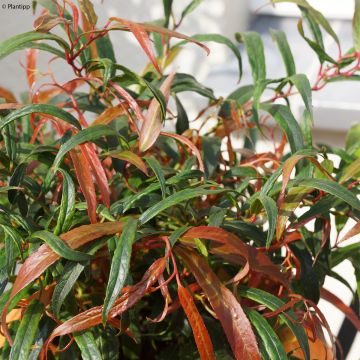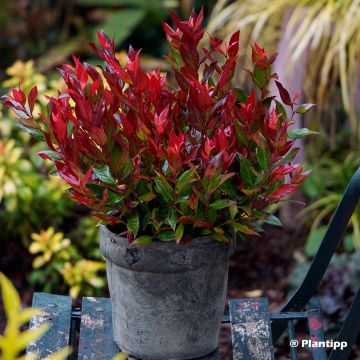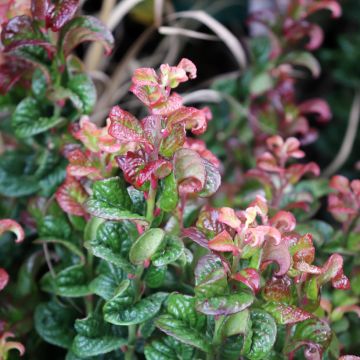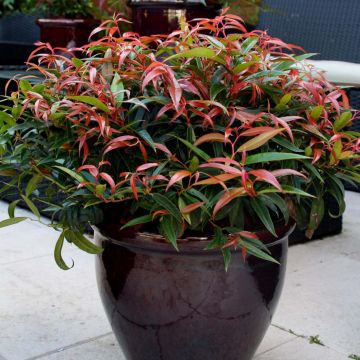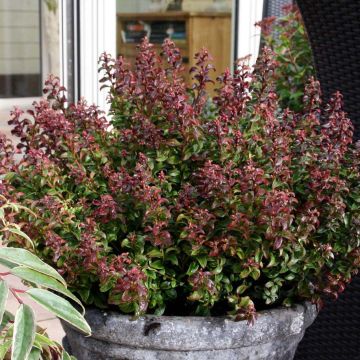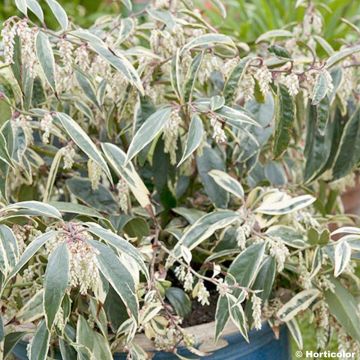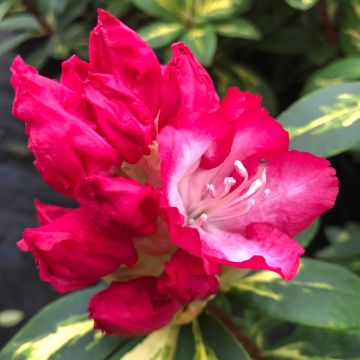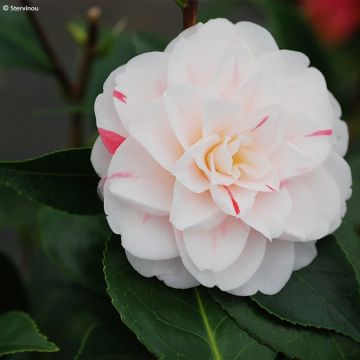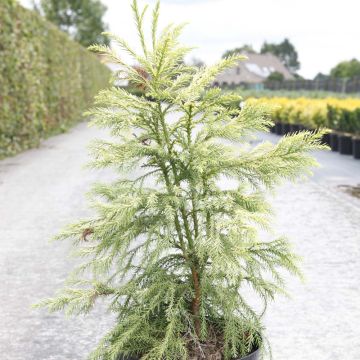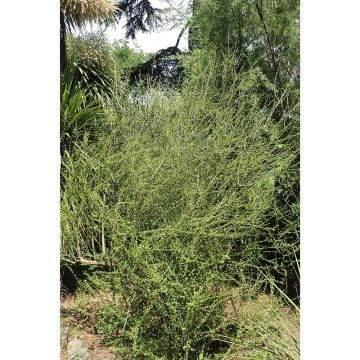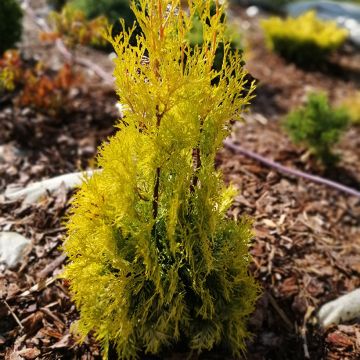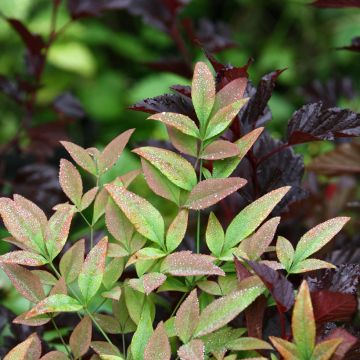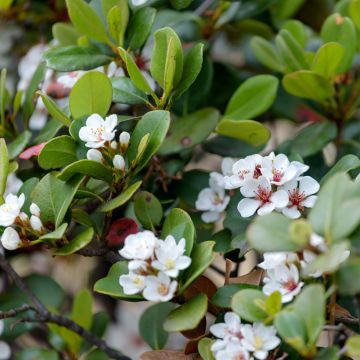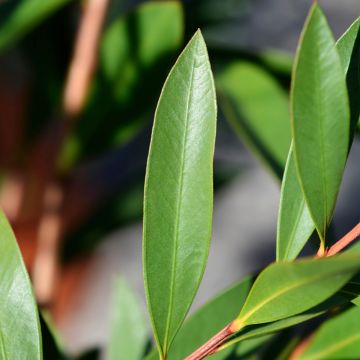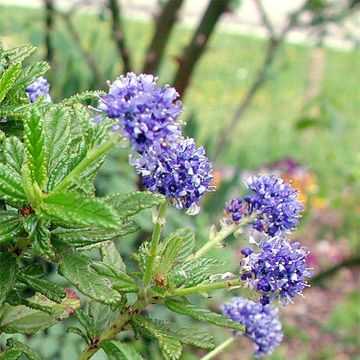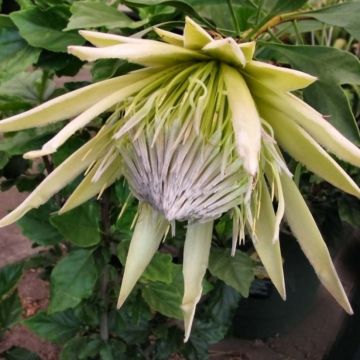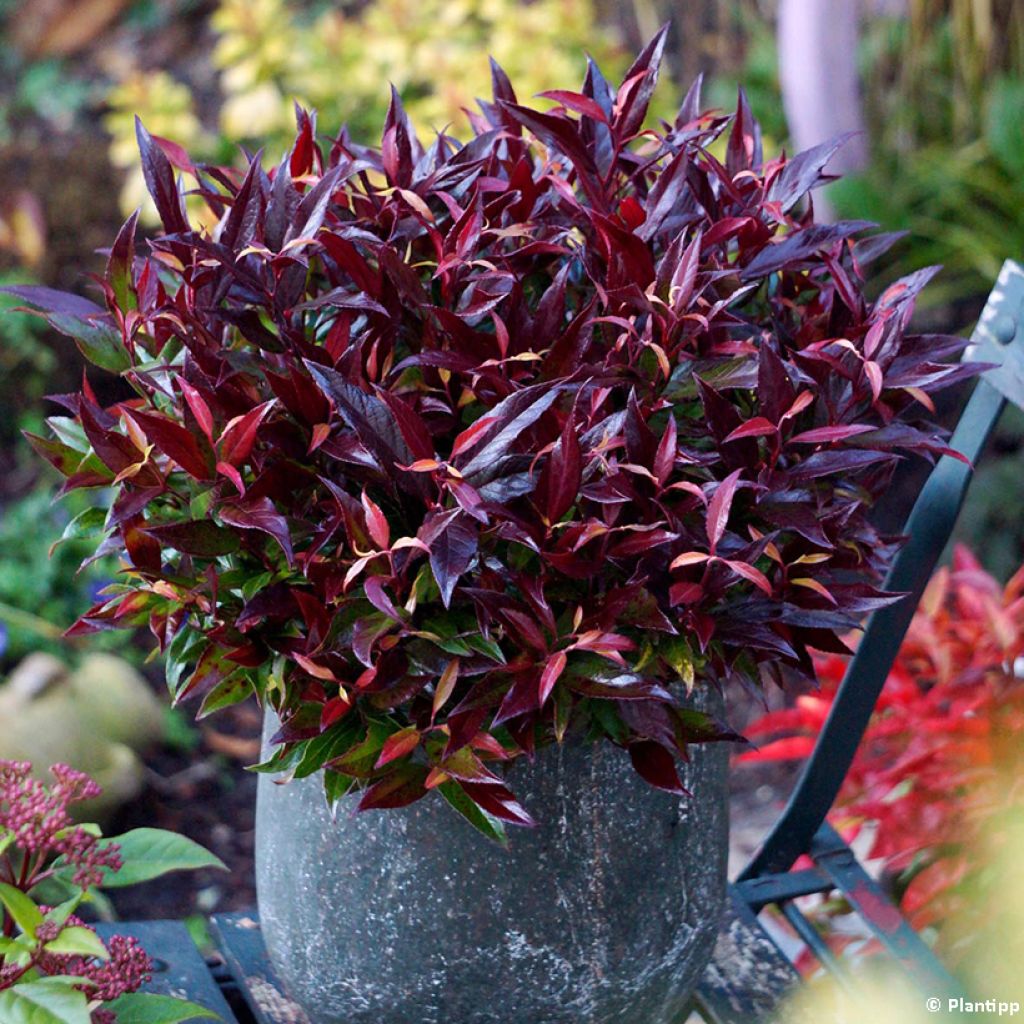

Leucothoe axillaris Red Lips - Leucothoé
Leucothoe axillaris Red Lips
Leucothoe axillaris Red Lips 'Lipsbolwi'
Swamp Dog-laurel, Dog Hobble
Why not try an alternative variety in stock?
View all →This plant carries a 24 months recovery warranty
More information
We guarantee the quality of our plants for a full growing cycle, and will replace at our expense any plant that fails to recover under normal climatic and planting conditions.
From €5.90 for pickup delivery and €6.90 for home delivery
Express home delivery from €8.90.

Does this plant fit my garden?
Set up your Plantfit profile →
Description
The Leucothoe axillaris 'Red Lips' is a little gem for the ornamental garden, as well as for living spaces such as terraces and balconies. This miniature bush is remarkable for its fine foliage with shiny reflections and changing colours according to the season. In turn red, green then purple to wine leaves, it is a permanent delight for the eyes, including in winter as it is evergreen. This acid soil plant shows a preference for diffused light while tolerating the sun in moist soil. Ideal as a border plant, it will also be perfect in a pot on a terrace or balcony.
The Leucothoe belongs to the Ericaceae family, particularly rich in ornamental plants, such as heathers, rhododendrons, strawberry trees or even pieris. Less known, the Leucothoe genus has about ten species morphologically quite close to blueberries, and native to North America and East Asia. The most important are L. fontanesiana and L. axillaris which have given many ornamental cultivars.
'Red Lips' is thus the result of a natural mutation of a horticultural variety discovered in 1997 in Putten in the centre of the Netherlands by A.L.Ch. Bolwijn, who then protected it in 1999 with a patent to distribute it on the market. It is a bush with reduced dimensions that spontaneously takes a rounded habit without requiring pruning. With fairly slow growth, it eventually reaches about 50 cm (19.7 in) in diameter, forming a ball bristling with short sharp shoots. When they emerge in the spring, the young shoots are coloured bright red, evoking bursting flames. The foliage consists of narrow leaves carried by short petioles. Elongated and pointed at their end, they have a clearly visible central vein that gives them the appearance of red lips, hence the name of the variety. They gradually turn to a medium green until the end of the summer, though their shiny cuticle always makes them decorative. In autumn and sometimes as early as the end of August, the foliage colours again, this time taking an intense purple hue, which then persists in winter.
The flowering in May in the form of small white bells characteristic of the Ericaceae is relatively insignificant, this variety is definitely a plant with decorative foliage.
Sharing the same needs as the other Leucothoe, 'Red Lips' needs a non-limestone, neutral and if possible slightly acidic soil. It grows well in fresh humus soil, and fears drought which damages its foliage and can cause entire branches to perish. That's why, although it can grow in the sun in a cool climate, it is often preferable to plant it in semi-shade to limit the drying effects of too bright sun. It will also need to be watered in summer to prevent the roots from suffering from dryness. It also holds under more intense shade, but its foliage will then be less coloured, which would be a shame, since it is truly its main asset. Very hardy, down to about -20°C (-4 °F) or even colder, this bush is well suited to pot culture due to its compact habit, and also because its roots are not very sensitive to frost. Generally free of diseases, and not requiring pruning, it is a low-maintenance plant and ornamental all year round.
This Leucothoe is a superb choice for pot culture, which also has the advantage of freeing it from calcareous local soils. It is then sufficient to choose an acidic repotting compost to ensure good growing conditions, and to water it regularly. In the open ground, it will be perfect as a border plant, or at the foot of trees, especially those with decorative bark. Thus, it will form a magnificent contrast in front of the pure white trunk of the Himalayan White Birch (Betula utilis var. jacquemontii 'Doorenbos'), and even more so in autumn when the tree's leaves take on their golden yellow livery! If space is limited, you will achieve a similar result by associating it with the Rubus thibetanus Silver Fern, an ornamental bramble with very white stems. Another interesting contrast can be obtained by planting in the background the Cornus alba Baton Rouge, a dogwood with red coral wood of great beauty.
Report an error about the product description
Plant habit
Flowering
Foliage
Botanical data
Leucothoe
axillaris
Red Lips 'Lipsbolwi'
Ericaceae
Swamp Dog-laurel, Dog Hobble
Cultivar or hybrid
Other Leucothoe
Planting and care
Place the Leucothoe 'Red Lips' in the sun or in semi-shade in warm regions, in a fresh, acidic or neutral soil. It can be installed in the morning sun in our northern regions, provided that the soil remains moist. It does not tolerate limestone: opt for ericaceous soil mixed with compost, or mix ericaceous soil with the soil in place (50/50) and do not water with calcareous tap water. You can incorporate a little organic amendment or compost at the bottom of the hole by mixing it with the soil, then covering with compost to avoid direct contact with the roots. Soak the root ball for a good quarter of an hour in a bucket of rain water to thoroughly soak it, then install it in the hole, backfill and water with the remainder of the bucket. Water regularly during the first two years, then monitor especially during dry periods, as Leucothoe does not like drought.
Planted in a pot, regular watering is essential. Prefer thick terracotta potteries, or "double skin" plastic (with an insulating air layer between the outer and inner wall) to prevent harmful heating of the substrate to the roots.
Planting period
Intended location
Care
-
, onOrder confirmed
Reply from on Promesse de fleurs
Evergreen shrubs
Haven't found what you were looking for?
Hardiness is the lowest winter temperature a plant can endure without suffering serious damage or even dying. However, hardiness is affected by location (a sheltered area, such as a patio), protection (winter cover) and soil type (hardiness is improved by well-drained soil).

Photo Sharing Terms & Conditions
In order to encourage gardeners to interact and share their experiences, Promesse de fleurs offers various media enabling content to be uploaded onto its Site - in particular via the ‘Photo sharing’ module.
The User agrees to refrain from:
- Posting any content that is illegal, prejudicial, insulting, racist, inciteful to hatred, revisionist, contrary to public decency, that infringes on privacy or on the privacy rights of third parties, in particular the publicity rights of persons and goods, intellectual property rights, or the right to privacy.
- Submitting content on behalf of a third party;
- Impersonate the identity of a third party and/or publish any personal information about a third party;
In general, the User undertakes to refrain from any unethical behaviour.
All Content (in particular text, comments, files, images, photos, videos, creative works, etc.), which may be subject to property or intellectual property rights, image or other private rights, shall remain the property of the User, subject to the limited rights granted by the terms of the licence granted by Promesse de fleurs as stated below. Users are at liberty to publish or not to publish such Content on the Site, notably via the ‘Photo Sharing’ facility, and accept that this Content shall be made public and freely accessible, notably on the Internet.
Users further acknowledge, undertake to have ,and guarantee that they hold all necessary rights and permissions to publish such material on the Site, in particular with regard to the legislation in force pertaining to any privacy, property, intellectual property, image, or contractual rights, or rights of any other nature. By publishing such Content on the Site, Users acknowledge accepting full liability as publishers of the Content within the meaning of the law, and grant Promesse de fleurs, free of charge, an inclusive, worldwide licence for the said Content for the entire duration of its publication, including all reproduction, representation, up/downloading, displaying, performing, transmission, and storage rights.
Users also grant permission for their name to be linked to the Content and accept that this link may not always be made available.
By engaging in posting material, Users consent to their Content becoming automatically accessible on the Internet, in particular on other sites and/or blogs and/or web pages of the Promesse de fleurs site, including in particular social pages and the Promesse de fleurs catalogue.
Users may secure the removal of entrusted content free of charge by issuing a simple request via our contact form.
The flowering period indicated on our website applies to countries and regions located in USDA zone 8 (France, the United Kingdom, Ireland, the Netherlands, etc.)
It will vary according to where you live:
- In zones 9 to 10 (Italy, Spain, Greece, etc.), flowering will occur about 2 to 4 weeks earlier.
- In zones 6 to 7 (Germany, Poland, Slovenia, and lower mountainous regions), flowering will be delayed by 2 to 3 weeks.
- In zone 5 (Central Europe, Scandinavia), blooming will be delayed by 3 to 5 weeks.
In temperate climates, pruning of spring-flowering shrubs (forsythia, spireas, etc.) should be done just after flowering.
Pruning of summer-flowering shrubs (Indian Lilac, Perovskia, etc.) can be done in winter or spring.
In cold regions as well as with frost-sensitive plants, avoid pruning too early when severe frosts may still occur.
The planting period indicated on our website applies to countries and regions located in USDA zone 8 (France, United Kingdom, Ireland, Netherlands).
It will vary according to where you live:
- In Mediterranean zones (Marseille, Madrid, Milan, etc.), autumn and winter are the best planting periods.
- In continental zones (Strasbourg, Munich, Vienna, etc.), delay planting by 2 to 3 weeks in spring and bring it forward by 2 to 4 weeks in autumn.
- In mountainous regions (the Alps, Pyrenees, Carpathians, etc.), it is best to plant in late spring (May-June) or late summer (August-September).
The harvesting period indicated on our website applies to countries and regions in USDA zone 8 (France, England, Ireland, the Netherlands).
In colder areas (Scandinavia, Poland, Austria...) fruit and vegetable harvests are likely to be delayed by 3-4 weeks.
In warmer areas (Italy, Spain, Greece, etc.), harvesting will probably take place earlier, depending on weather conditions.
The sowing periods indicated on our website apply to countries and regions within USDA Zone 8 (France, UK, Ireland, Netherlands).
In colder areas (Scandinavia, Poland, Austria...), delay any outdoor sowing by 3-4 weeks, or sow under glass.
In warmer climes (Italy, Spain, Greece, etc.), bring outdoor sowing forward by a few weeks.



































